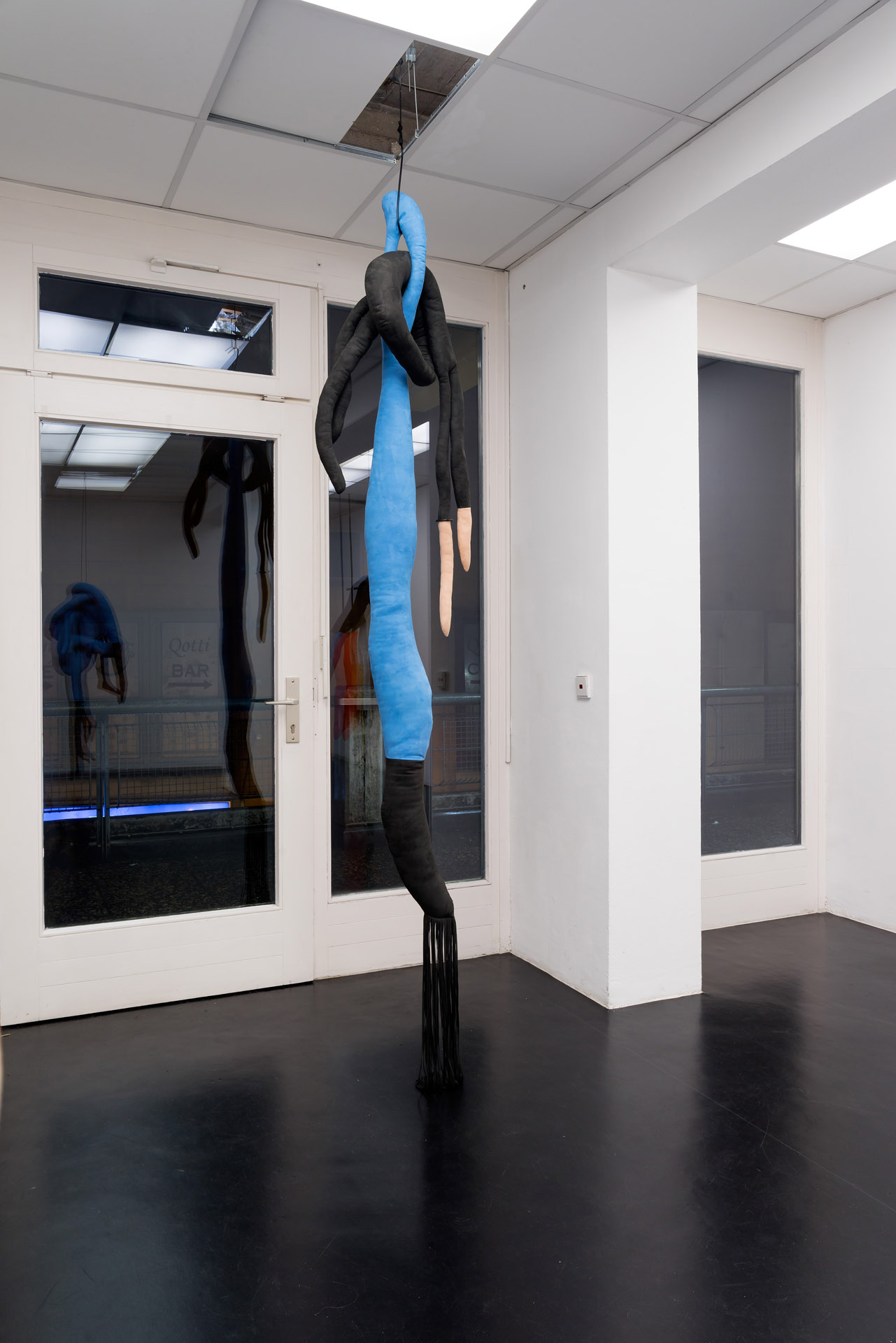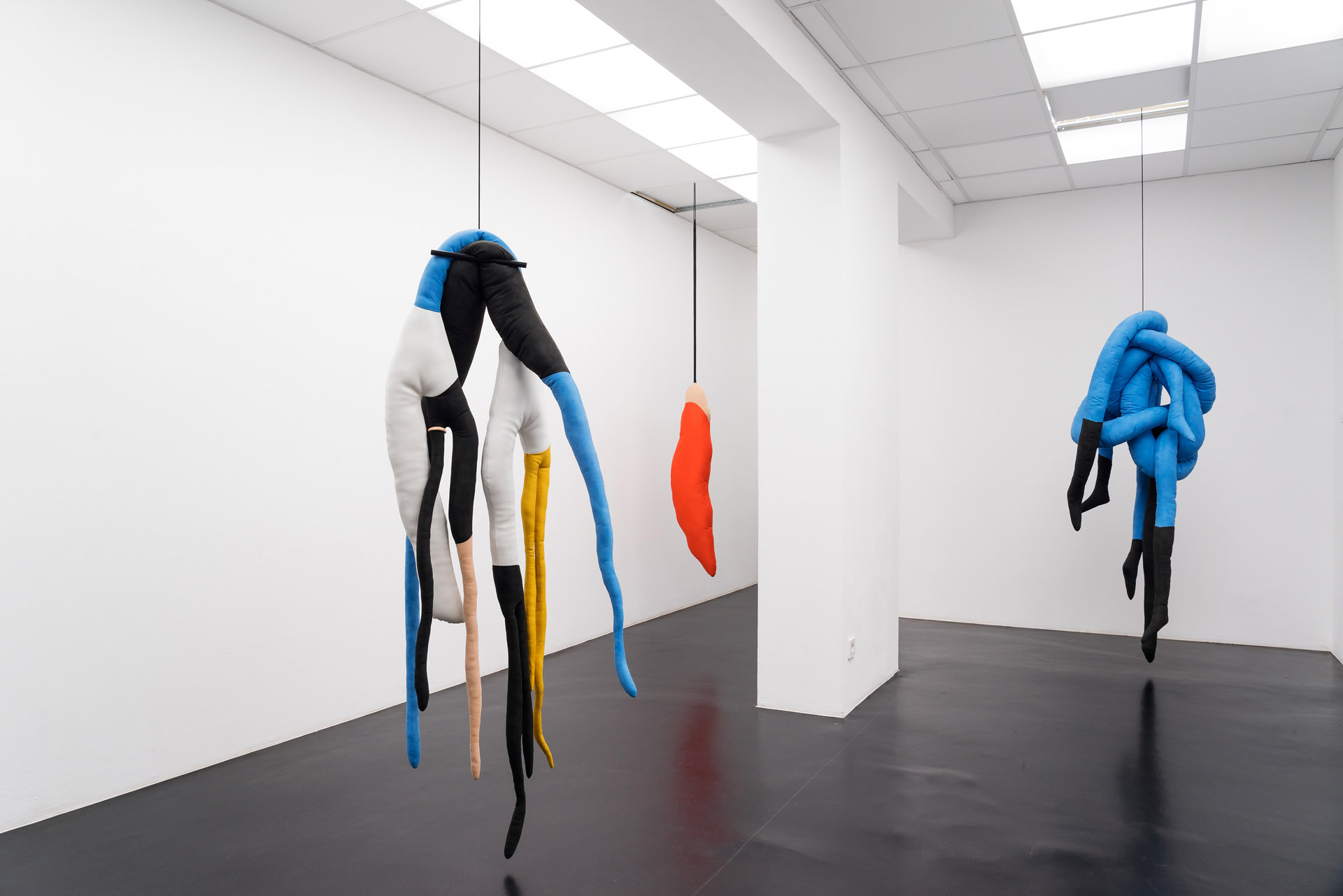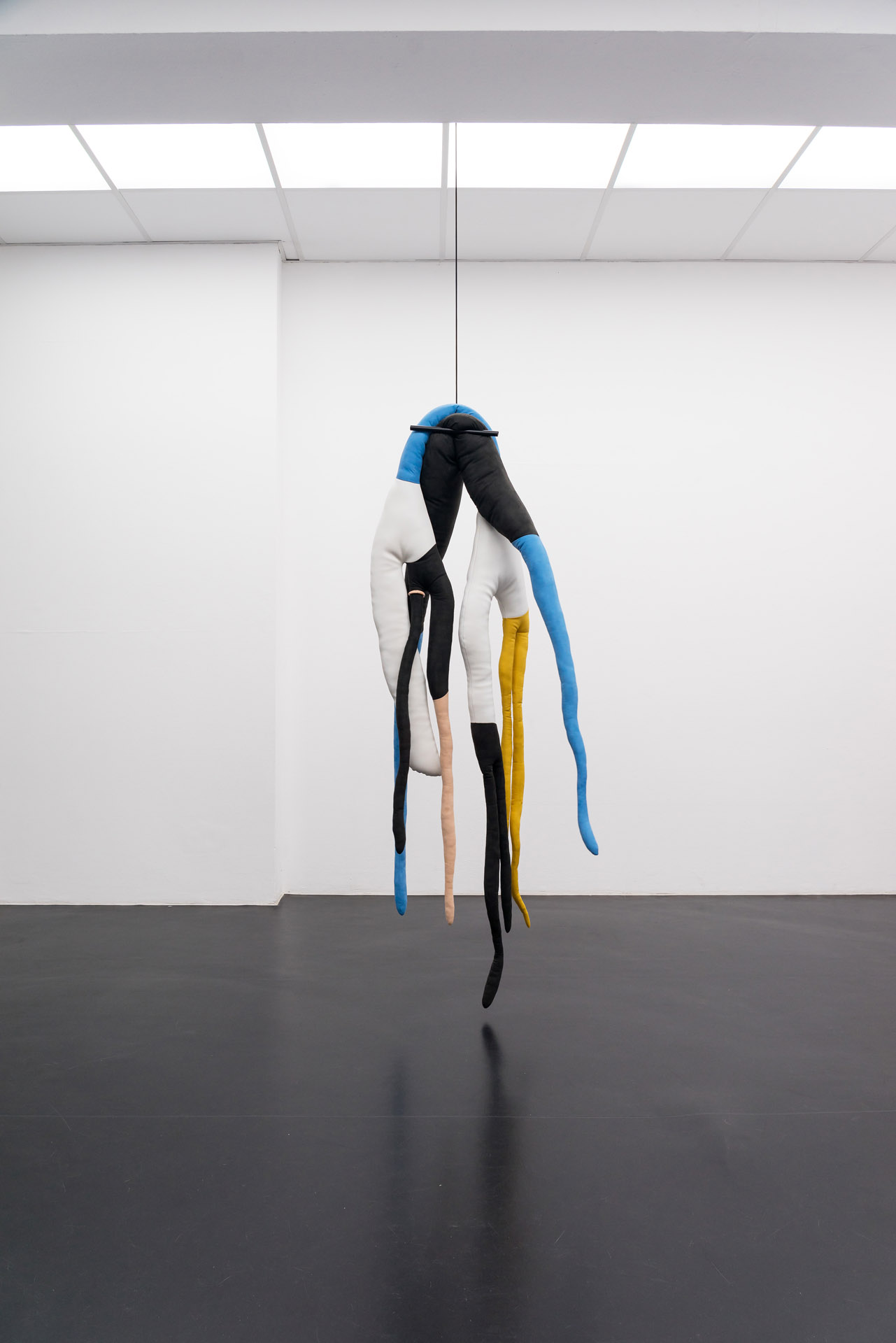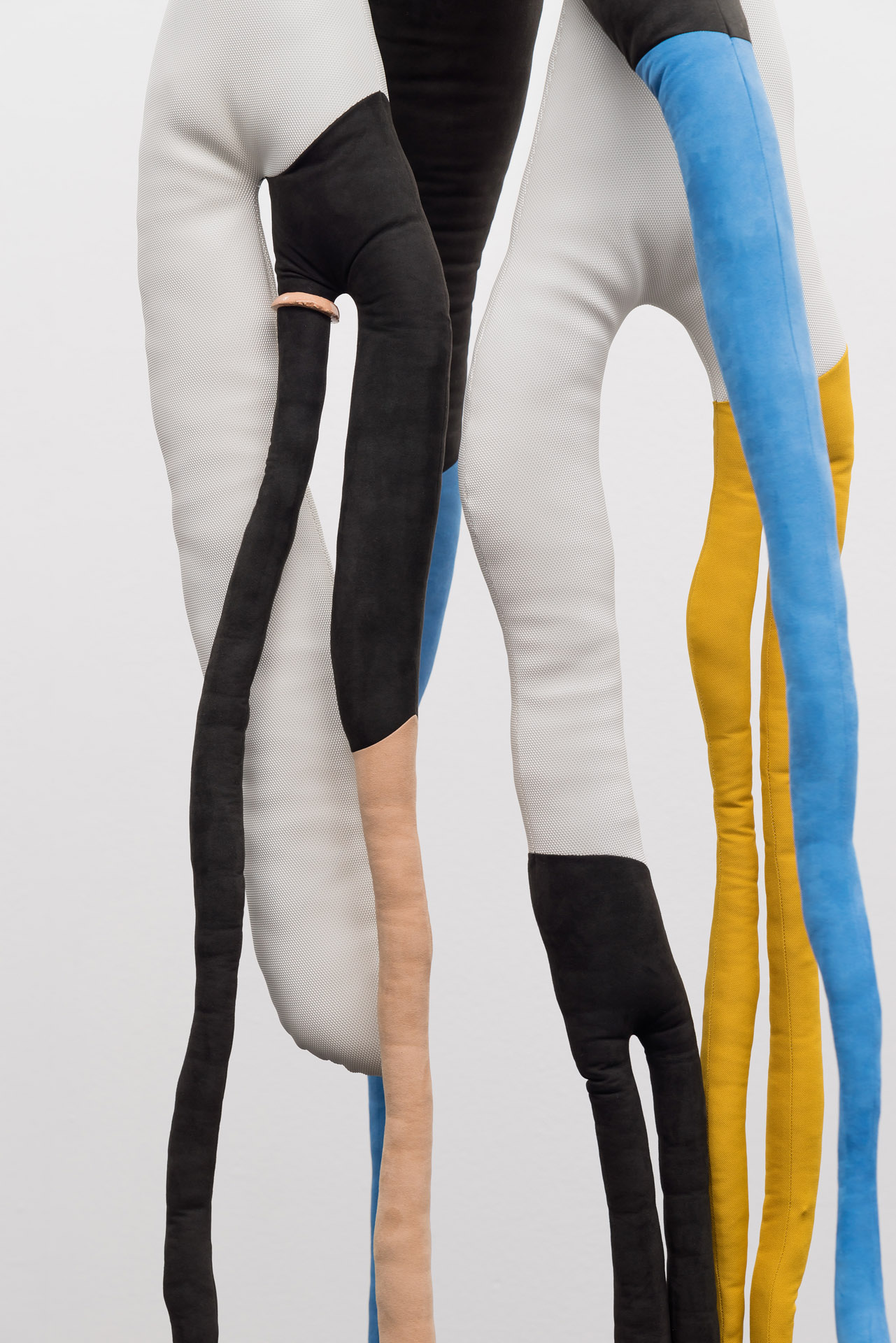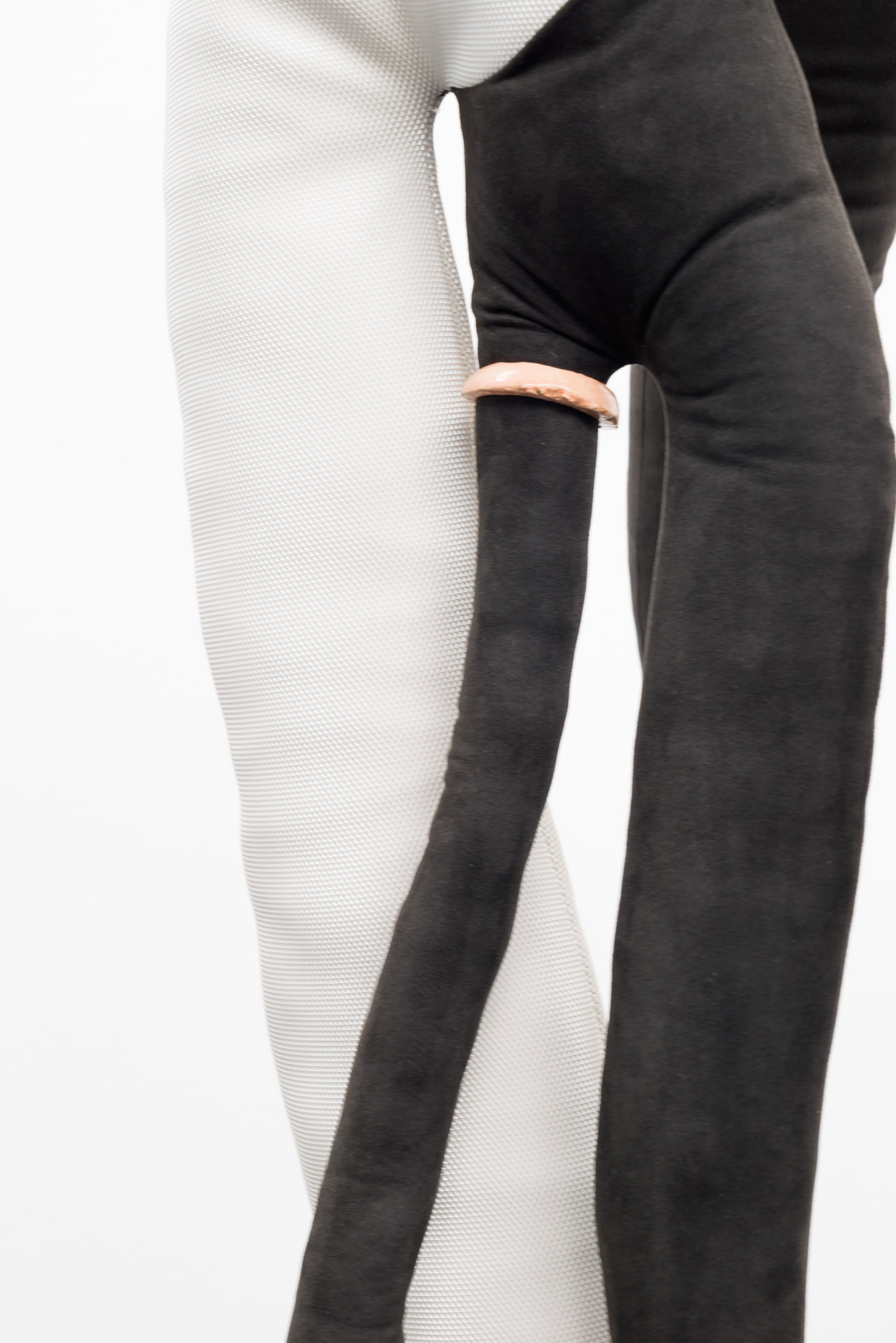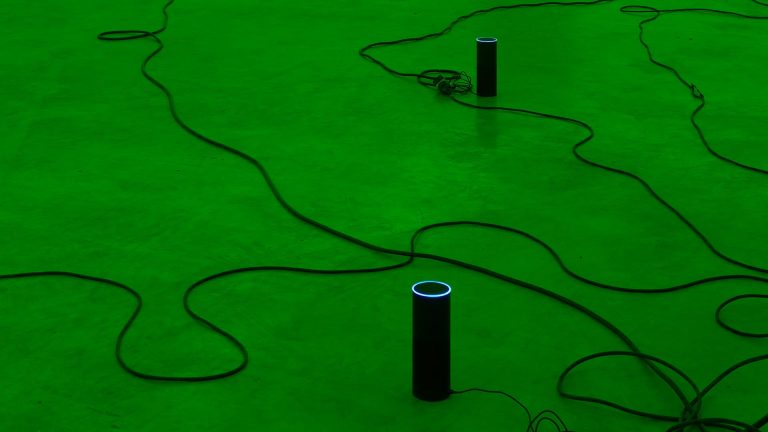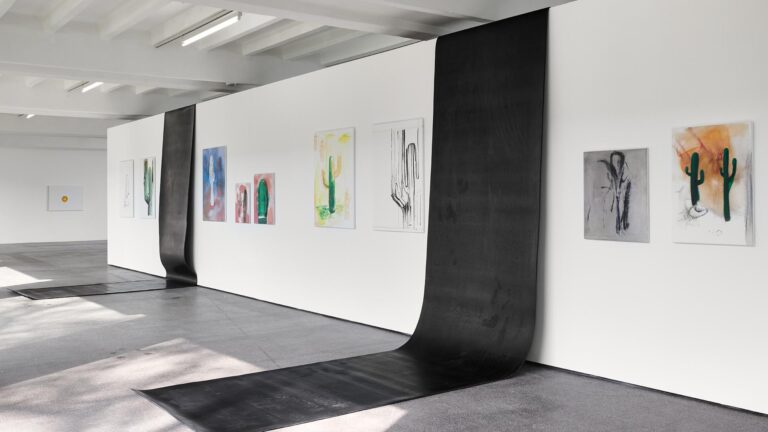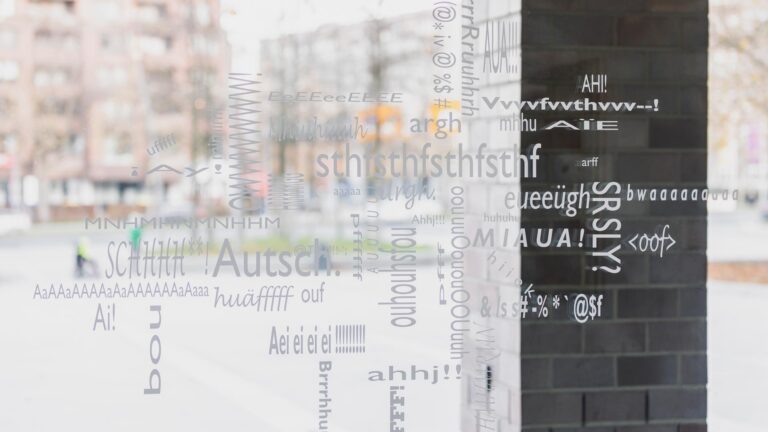Artist: Hella Gerlach
Exhibition title: Spiritual Bypass #2
Venue: STATIONS, Berlin, Germany
Date: August 15 – September 12, 2021
Photography: all images copyright and courtesy of the artist and STATIONS, Berlin
Hella Gerlach’s exhibition Spiritual Bypass #2 at STATIONS continues the series of sculptural objects first shown at Acapella in Naples this spring[1]. Of this series, counting to date twenty-eight sculptures, eleven are shown here. Each is titled HANGOVER and assigned a number; together they offer a flexible textile lexicon of shapes and conditions. Gerlach combines and connects individual pieces into five groupings or “settings”, which, assembled, form an installation. Grouped as such, the connections between these objects interweave, generating a new (sculptural) body. The works consist of various tubular and droopy shapes, some long and loose, some voluminous and contorted. Distributed individually or in groups throughout the space, they hang on eye-level from the ceiling. Some groups are in a soft motorized motion, rotating around their own axis. And––notwithstanding the measured distance between them––in tight spatial correlation to each other, as well as to the body of the viewer whom they gradually envelop with their presence.
Gerlach’s approach to sculpture is focused on the very nature of its corporeality. Rather than aiming for a final outcome, it’s the in-between moments that give shape to her objects, and make way for a more open and flexible perspective, softening the static. They remain in process. Spiritual Bypass #2 thus take up on principles that are immanent in Gerlach’s practice. Here, objects can also become conditions, and suggest a form for their immaterial qualities.
The shapes are filled with minute doses of substances like black nightshade, ash, honeysuckle, ketamine or with elements, such as copper and sulfur. Fillings like previously owned clothes, for instance, reflect the idea of the social body, and that merges of different energies in one form. They bare a collective and communal state, just as they can articulate entanglements and feelings of confusion that can appear when interpersonal relations are disrupted, and things just need “a moment to let that settle”.
Gerlach further expands these settings aurally: subtle tones and chimes permeate the space, coming rare and in bursts. When listening carefully, one can hear the flow of organically sounding tones, composed in collaboration with Yosa Peit. The sounds evoke vague associations while at the same time refusing to be attributed to anything known. They are like impulses reacting to their environment, or rather to each other. By extending these physical objects through sound, Gerlach furthers the idea of her textile shapes as bodies, and of the body as a carrier that uses its own memory to grow and transform itself.
The tactile and auditory qualities of the works intersect with the objects’ corporeal qualities; they are like bodies turned inside out. In feeling inside of them, they seem to present a mirror for our own interiors, not construed as a psychology “thought” inside the head, but rather an unconscious that manifests itself in the body. Where is an emotion? What does it feel like? Can you describe it? Does it have a color, or a texture? Is it tight, loose, heavy, floaty? Entering into that “inside” might look like these objects, which rotate as if spinning around a central spine. They are body doubles, mirrors, a display literally hanging out next to and over us: What I am hearing is that you are feeling “this way”. They offer a vocabulary for things that can be felt but not easily said. They are conditions in the form of tubes, knots, roots, wings, and hooks whose tangible presence asks us to insert ourselves into and inhabit them in space like non-virtual dongles. Dropping from the ceiling, twirling around like loops in the mind when the body desires stasis and grounding. Gerlach’s hanging accretions never stop moving. Even when rotating and revolving around themselves, together they grow into a collective rhythm. They are process. “Let’s just let that settle for a moment – do you have everything you need?”
Based on Sasha Rossman’s text for Hella Gerlach’s exhibition Spiritual Bypass at Acapella, Naples.
The artist thanks Andreas Kraus, Caroline Paulick-Thiel, Christa Schramm, Guillermo Frei, Gloria Hao, Johannes Schumacher, Jan Dietrich, Dr. Karin Bandelin, Frank Marks, Renate Müller, Evelyn Sitter, Manuel Stade, Roman Schramm, Dr. Sasha Rossman, Alex Paulick, Nadim Vardag, and Yosa Peit for their support.
[1] Spiritual Bypass at Acappella, Naples/Italy, April 24 – June 3, 2021

